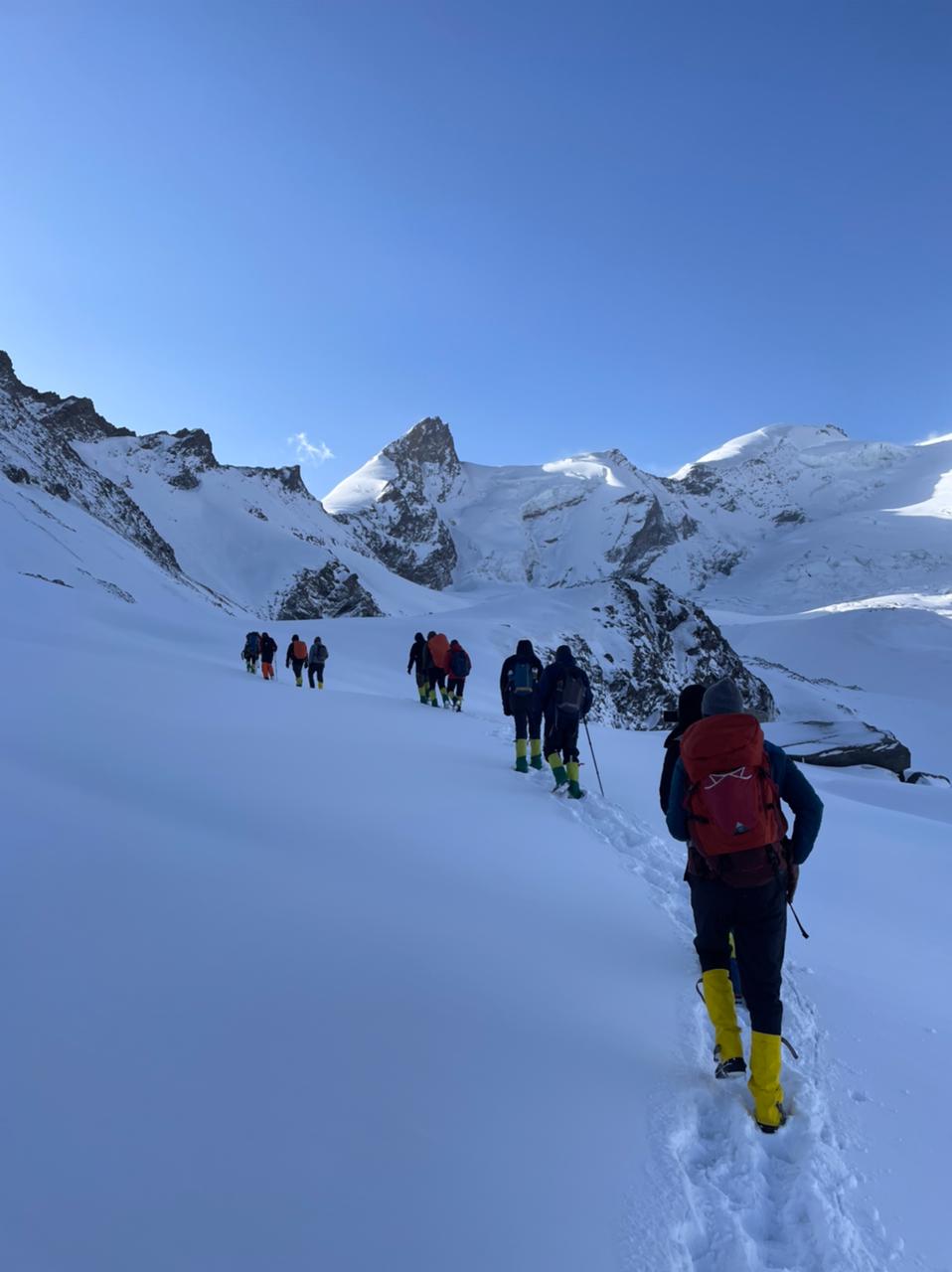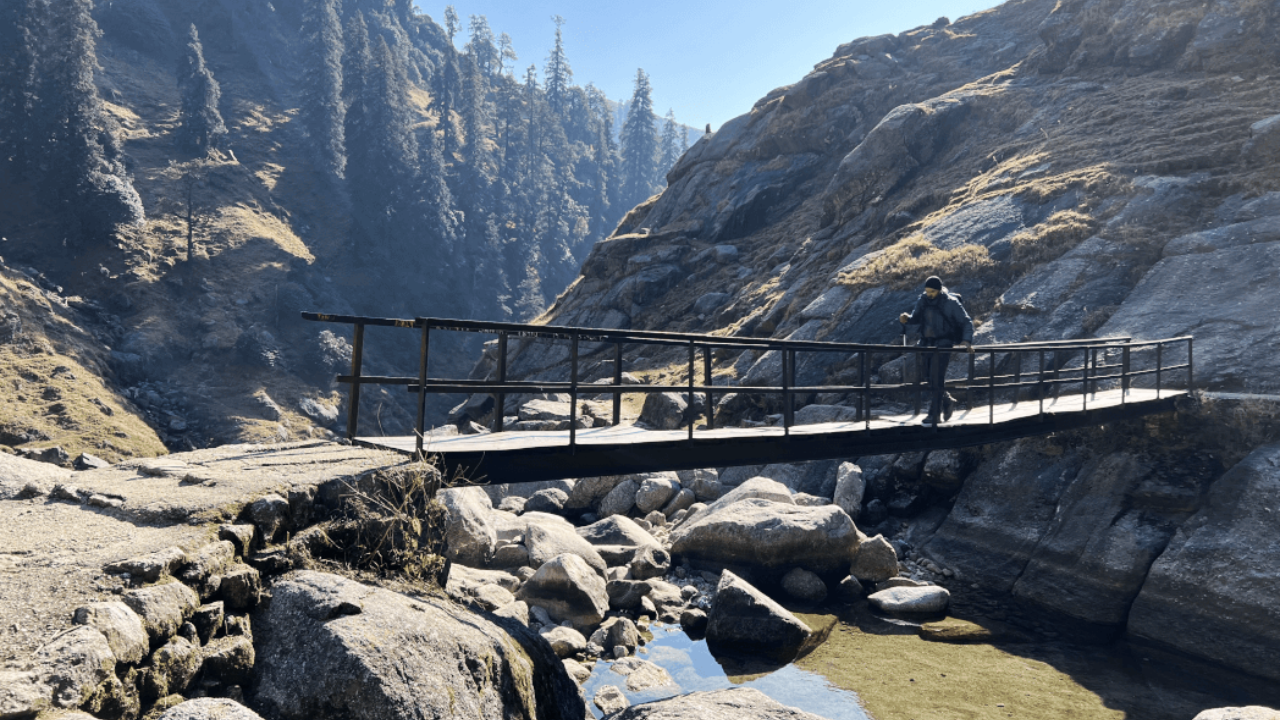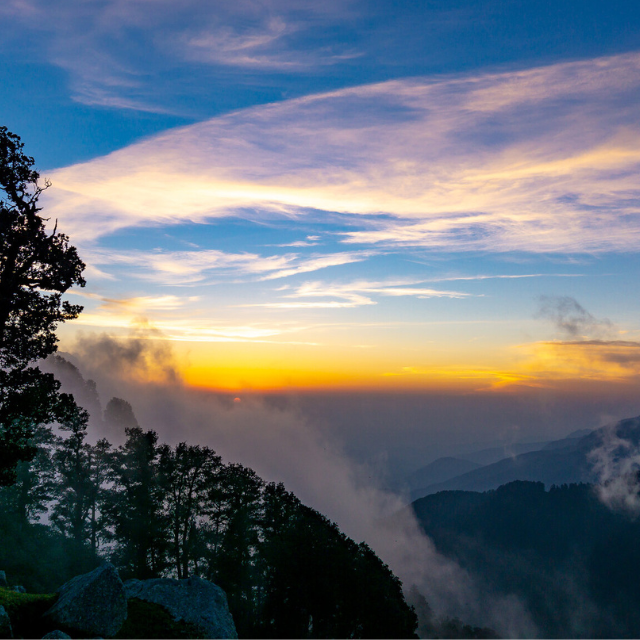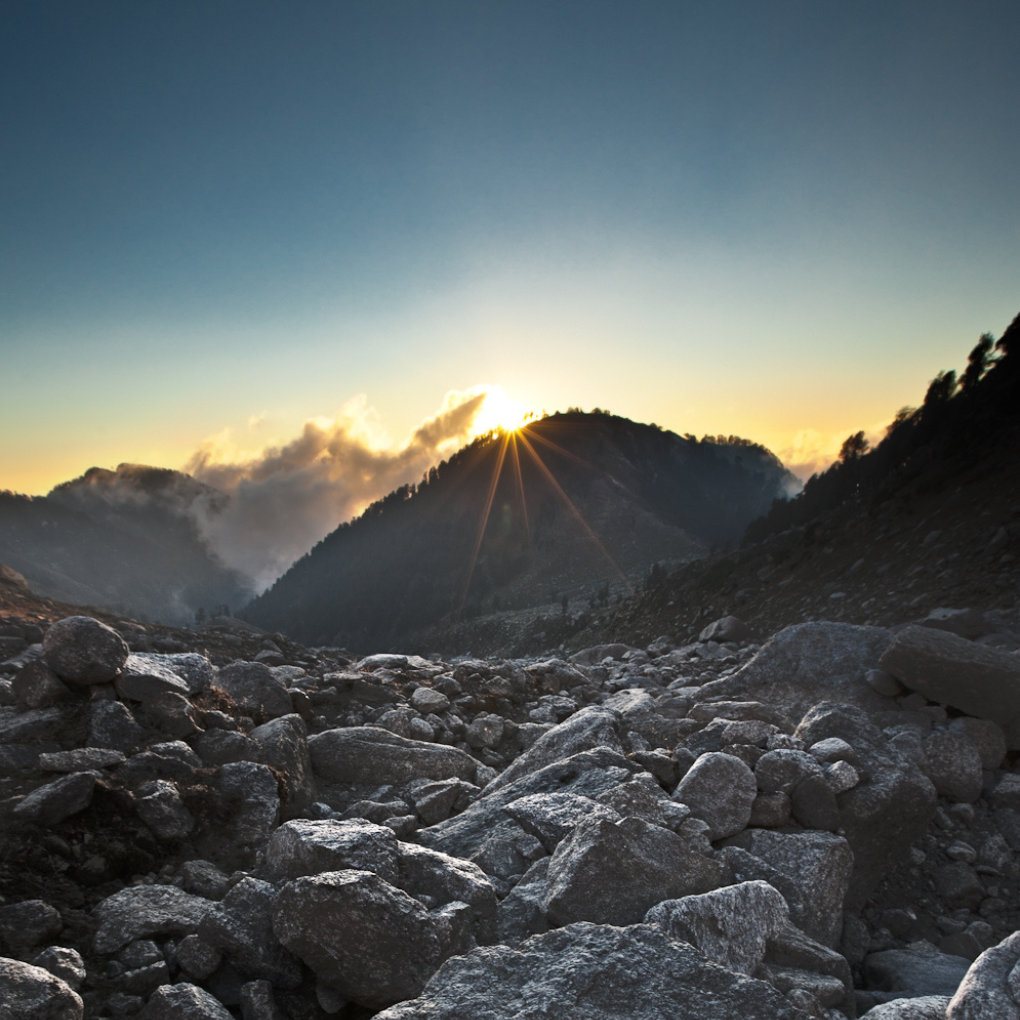
Buran Ghati Trek
7 Days
42 Km
15,000ft
18+
Moderate
The Buran Ghati Trek is a stunning high-altitude crossover trek in Himachal Pradesh, connecting Janglik in the Pabbar Valley to Barua village in Kinnaur. Sitting at 15,000 ft, this trek offers an ideal mix of dense forests, vast meadows, glacial lakes, ancient villages, and a thrilling ice wall descent. Known as one of the most adventurous treks in India, it provides breathtaking Himalayan views, making it a must-do for both seasoned trekkers and nature lovers.
Why This Trek?
- Scenic Diversity: Experience thick oak & pine forests, golden meadows, glacial lakes, and towering peaks, all in one trek.
- Chandranahan Lake: Visit the sacred glacial lake, a highlight of the trek, surrounded by pristine beauty.
- Thrilling Ice Wall Descent: The 100-meter vertical ice wall descent from Buran Pass is an adrenaline-pumping challenge.
- Ancient Himalayan Villages: Explore Janglik and Barua, untouched villages that showcase traditional Himachali culture
- Less Crowded & Raw Adventure: Unlike mainstream treks, Buran Ghati offers an offbeat and immersive trekking experience
Included/Excluded
Select Dates
Adult
₹15,499 per person
Children
₹15,499 per person
Guest in maximum
BOOK NOWItinerary for
Buran Ghati Trek
Day 1
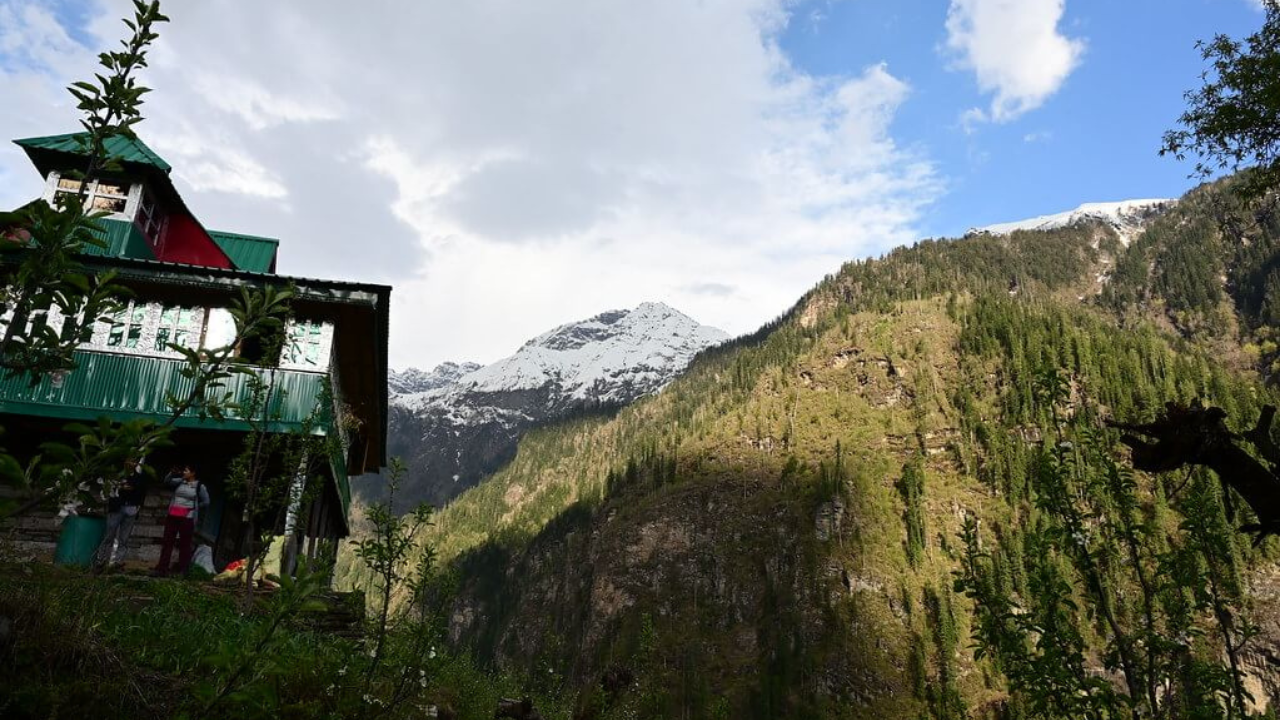
Day 2

Day 3

Day 4

Day 5

Day 6
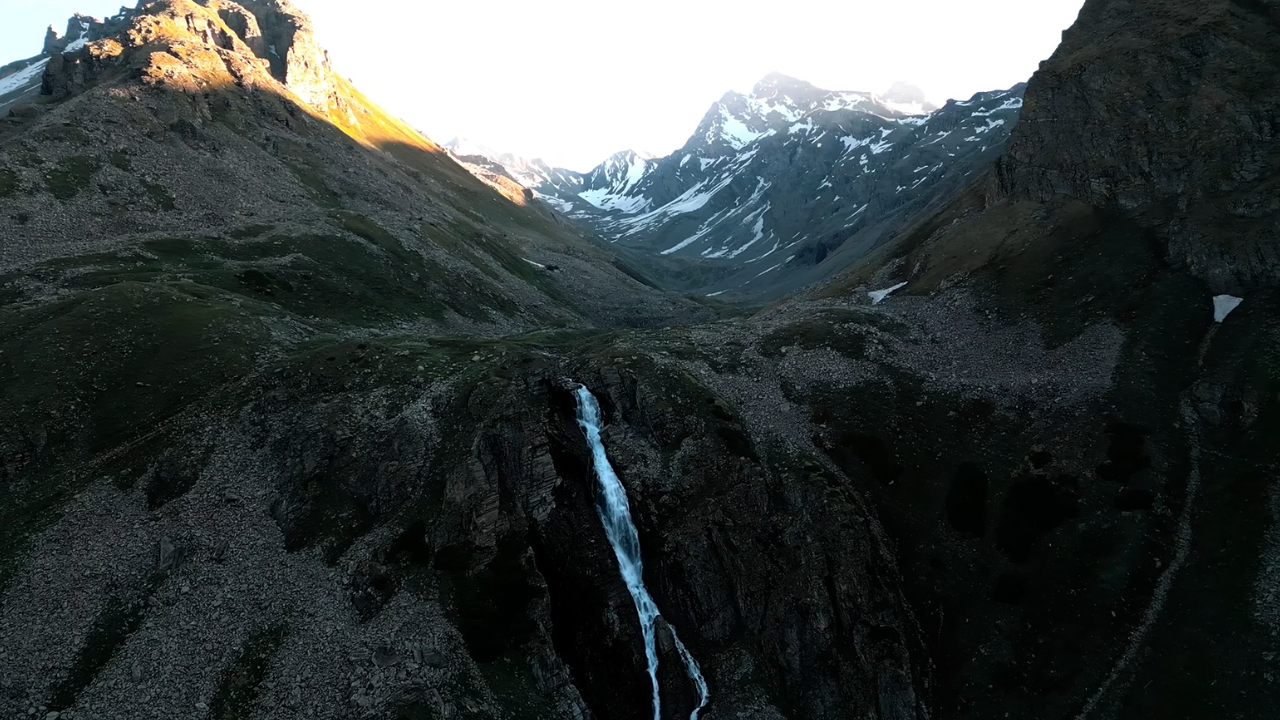
Day 7

Complete Buran Ghati Trek Information
The best time for the Buran Ghati Trek is May to June (pre-monsoon) and September to October (post-monsoon).
-
May to June – Snow-covered trails, lush greenery, and adventurous ice-wall descents.
-
September to October – Clear skies, autumn colors, and breathtaking views, with less snow but equally thrilling terrain.
Avoid monsoon (July-August) due to heavy rains and landslides, and winter (November-April) as the pass remains snowbound and inaccessible.
1. By Flight (Fastest Option)
Nearest Airport: Jubbarhatti Airport (Shimla) - 22 km from City Center
-
Limited direct flights are available from Delhi.
-
Alternative: Fly to Chandigarh Airport (IXC) (~120 km from Shimla)
-
From Chandigarh, take a bus, taxi, or toy train to Shimla (~3-4 hours).
-
2. By Train (Scenic Option)
Nearest Major Railway Station: Kalka (90 km from Shimla)
-
Take a train to Kalka from Delhi, Kolkata, or Mumbai.
-
From Kalka, board the famous Kalka-Shimla Toy Train (UNESCO World Heritage).
-
The toy train takes 5-6 hours to reach Shimla, passing through tunnels and scenic valleys.
3. By Road (Best for Budget & Comfort)
From Delhi: (~350 km, 7-8 hours)
-
Volvo and HRTC buses available from ISBT Kashmere Gate.
-
Private taxis and self-drive options are also popular.
From Chandigarh: (~120 km, 3-4 hours)
-
Regular HRTC and private buses available.
-
Taxis and self-drive options also work well.
From Manali/Dharamshala: (~250 km, 7-8 hours)
-
Direct buses and shared taxis available.
Pack smart, trek safe!
Ensure you're prepared for every adventure with this essential checklist of gear and supplies. Whether you're a beginner or a seasoned trekker, the right equipment makes all the difference. Download checklist's pdf here
Basic Gear
| Backpack with Rain Cover | (40 - 50 ltr) Comfortable Shoulder Straps |
| Day pack with Rain Cover | 20 - 30 ltr (If off-load opted) |
| Walking stick | Advisable (At least one) |
| Water Bottle / Hydration pack | 2 Bottles(1 liter each), Hydration Pack 1 (Pack) + Bottle |
| Small size tiffin/lunch box | 1 Nos |
| Snacks | Energy bars, dry fruits, electral/ors |
| Personal Medical Kit | Consult your doctor |
Clothing
| T-Shirt (Synthetic quick dry) | 1 Full & 1 Half sleeves |
| Fleece T-shirt | 1 Nos |
| Wind stopper / Fleece jacket | 1 Nos |
| Windproof Jacket | 1 Nos |
| Down feather / Hollow jacket | 1 Nos |
| Thermal inner (Upper and Lower) | 1 Nos |
| Trek Pant (Synthetic quick dry) | 1 Nos |
| Wind stopper / Fleece Pant | Not required |
| Waterproof gloves | Not required |
| Fleece / woollen gloves | 1 Pair |
| Poncho / waterproof Jacket and pant | 1 Nos |
Head Gears
| Head torch | 1 Nos. (Avoid Hand torch) |
| Sun cap | 1 Nos. (One that covers the neck as well) |
| Woolen cap | 1 Nos. |
| Balaclava | Not required |
| Buff / Neck-gaiters | 1 Nos |
| Sunglasses | UV with dark side cover, People who wear spectacles - (A)- Use contact lenses | (B)- Photo chromatic glasses |
Foot Gears
| Trekking shoes | 1 Pair (Waterproof, high ankle with good grip) |
| Floaters / flip-flops | 1 Pair |
| Cotton socks | 6 pairs |
| Woollen socks | 1 pairs |
| Gaiters | 1 Pair (provides when required) |
| Micro spikes | 1 Pair (provides when required) |
Personal Utilities
| Sunscreen cream | 1 Nos |
| Moisturiser | 1 Nos |
| Chap-stick / Lip balm | 1 Nos |
| Toothbrush and toothpaste | 1 Nos |
| Toilet paper & Wipes | 1 Nos |
| Soap / hand sanitizers | 1 Nos |
| Antibacterial powder | 1 Nos |
| Quick dry towel | 1 Nos |
At Scoutripper, we understand that plans can change. You can reschedule your booking up to 24 hours before your experience begins. Changes are subject to availability and any applicable price adjustments. Rest easy knowing your adventure is flexible!
At Scoutripper, we value flexibility but also adhere to clear cancellation guidelines:
- Full Refund: Cancel at least 6 full days before the experience starts.
- 50% Refund: Cancel between 2 and 6 full days before the start time.
- No Refund: Cancellations made less than 2 full days before the experience start time will not be refunded.
Additionally:
- Changes are not accepted less than 2 full days before the experience begins.
- Cut-off times are based on the local time of the experience.
- Some experiences require a minimum number of participants. If the minimum isn’t met, you’ll receive a full refund or the option to reschedule.
Enjoy peace of mind with our clear and transparent policies!
Mobile Network & Internet:
-
Last mobile network: Janglik (Vodafone & Airtel).
-
No network connectivity beyond Janglik at any campsite.
-
Possibility of weak signals at some points on the trail, but don’t rely on it.
-
Make all important calls in Shimla before heading to the trek.
ATMs & Cash Availability:
-
Last ATM location: Rohru (40 km before Janglik).
-
Best option: Withdraw cash at Shimla for a hassle-free experience.
-
Carry ₹4,000–6,000 for transport, rentals, and personal expenses.
Electricity & Charging Points:
-
Janglik is the last place with electricity, but it's highly unreliable.
-
No charging points at any campsites or along the trek.
-
Carry extra batteries for your camera and a power bank (minimum 10,000mAh).
-
Cold temperatures drain battery life faster, so keep devices warm inside your sleeping bag.
FAQs about
Buran Ghati Trek
The Buran Ghati Trek is located in Himachal Pradesh, India, in the Kinnaur region. The trek starts from Janglik village and crosses the Buran Pass (4,570 meters / 15,000 feet) before descending into the beautiful Barua village
The trek is moderate to difficult, requiring good fitness and prior trekking experience. It involves steep ascents, descents, rock climbing, and an exciting snow slide on the other side of Buran Pass.
The best time for the trek is May to June (pre-monsoon) and September to October (post-monsoon). Spring offers snow-covered landscapes, while autumn brings clear skies and colorful forests. The trek is not recommended during monsoon due to heavy rains and landslides.
The Buran Ghati Trek takes about 7 days, covering approximately 37 km from Janglik to Barua village.
Yes, permits are required since the trek passes through forested areas. The permits can be arranged by trekking organizers or obtained from local authorities.
The highest point of the trek is Buran Pass at 4,570 meters (15,000 feet). It offers stunning views of the Kinnaur and Himachal mountain ranges.
Yes, as the trek reaches high altitudes, some trekkers may experience altitude sickness. Proper acclimatization, hydration, and a gradual ascent are crucial to avoid symptoms like headache and dizziness.
Trekkers stay in campsites at various points along the route. Janglik and Barua villages have basic homestays and guesthouses available before and after the trek.
The trek is known for its diverse landscapes, including dense forests, lush meadows, icy slopes, glacial lakes, and thrilling snow slides from Buran Pass. It is a perfect blend of adventure, beauty, and cultural experience.
No, technical climbing is not required, but ropes may be used for descending the steep snowy slopes of Buran Pass in early seasons. Trekkers should be comfortable with high-altitude trekking and basic snow trekking skills.


